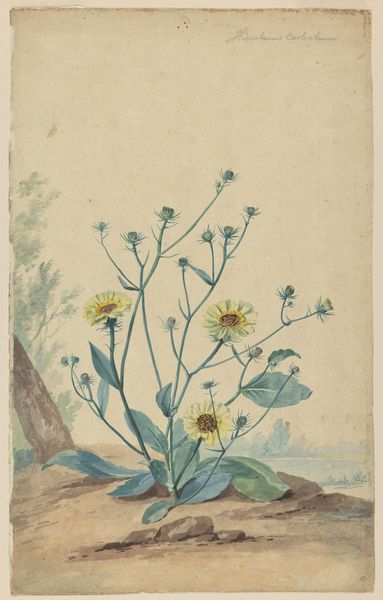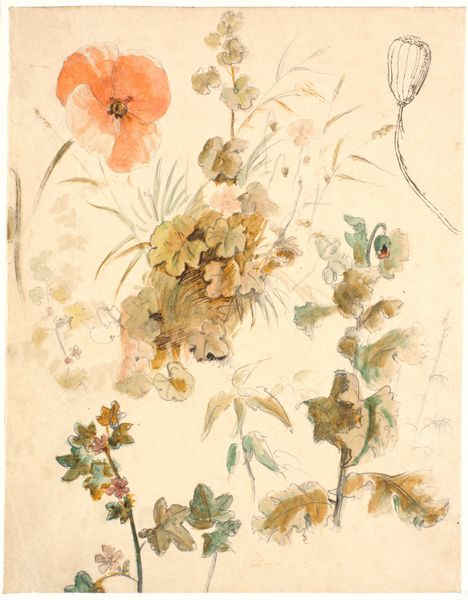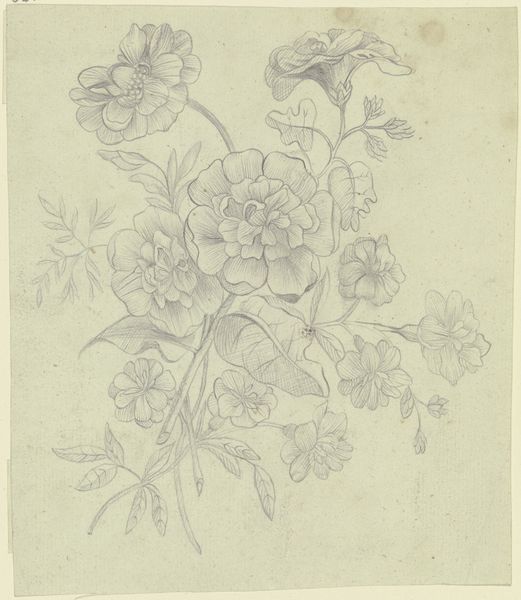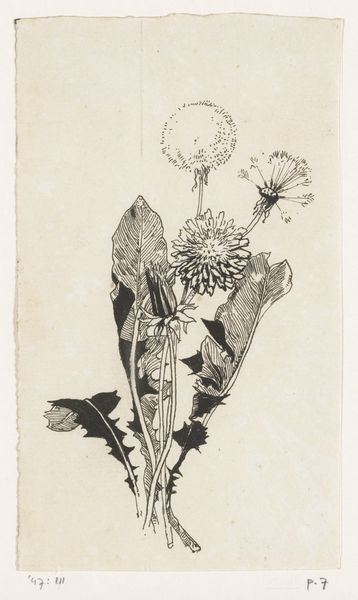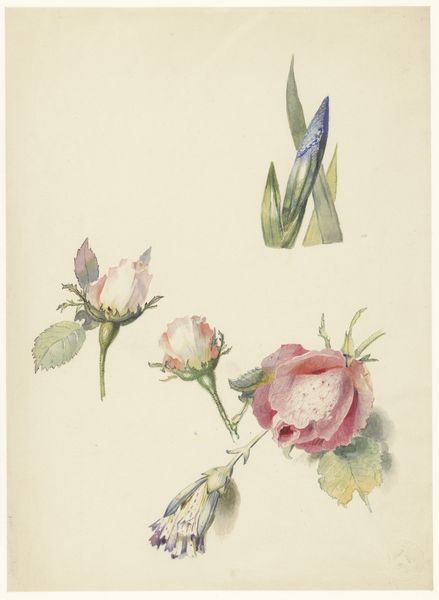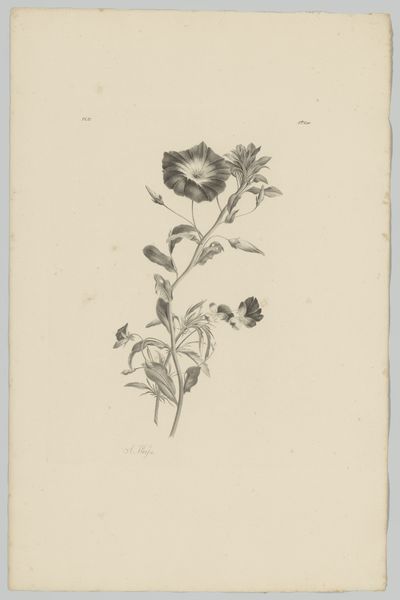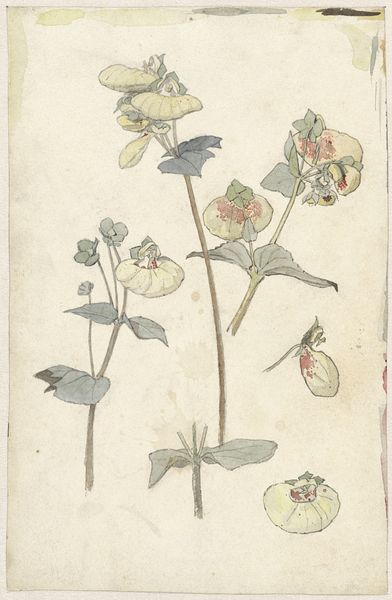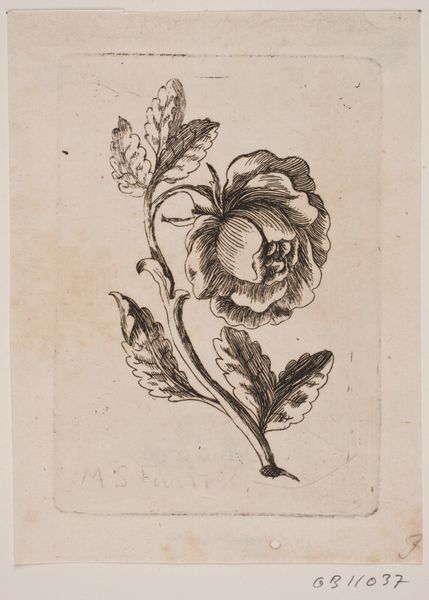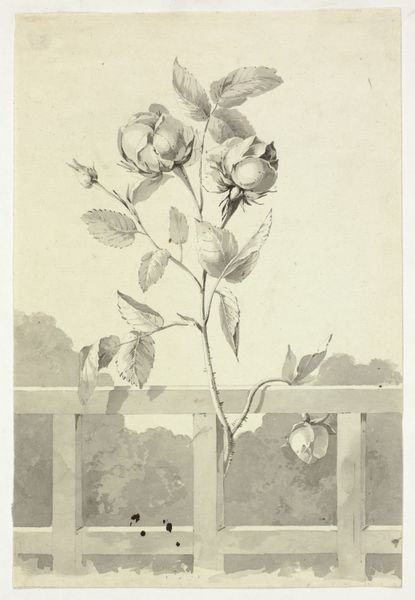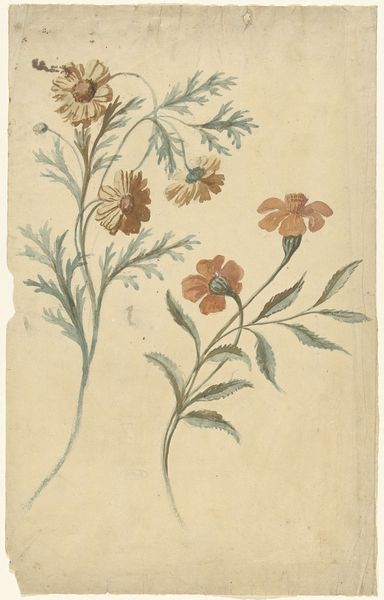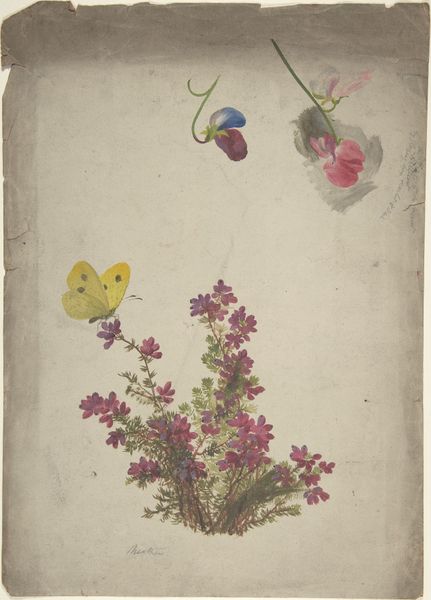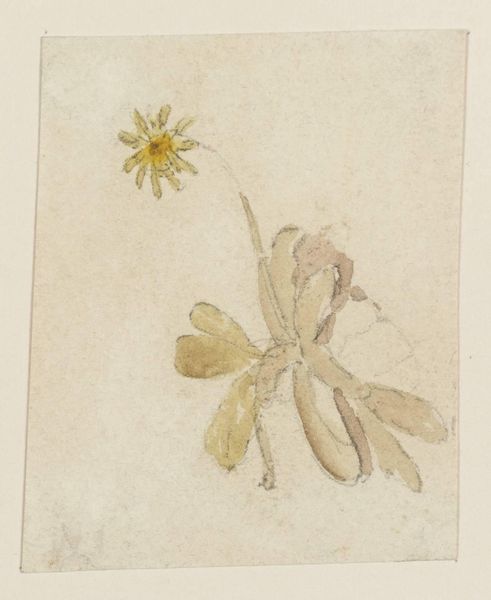
painting, watercolor
#
water colours
#
painting
#
flower
#
figuration
#
watercolor
#
plant
#
romanticism
#
botany
#
academic-art
#
realism
Copyright: Public domain
Curator: This is Eugène Delacroix’s "Study of Flowers," created around 1850, using watercolor. What are your immediate impressions? Editor: Well, it’s delicate. The colors are muted, soft. The composition feels intentionally unfinished, like a fleeting moment captured rather than a formal botanical study. Curator: That's perceptive. Delacroix, of course, was working within a Romantic tradition where the power of nature, particularly the fleeting aspects of it, was paramount. This study aligns with the rising interest in botany amongst the leisure classes and in naturalistic representations suitable for a modernizing urban world. Editor: Yes, I see that, but look at how he uses the watercolor. The washes of color almost dissolve into the paper, creating a luminous effect. He captures the essence of each flower with such minimal detail – that central bloom is nearly abstract. There's a focus on texture too; see how the paint suggests the fragile, almost papery quality of the petals. Curator: Delacroix’s career spanned a turbulent period in French history. Artists responded by re-evaluating older, conservative traditions for inspiration, especially ones depicting nature. The appeal in art was less academic perfection, but how artwork depicted beauty from the "real" world to make statements on the nature of life in the tumultuous new world. Editor: The yellow flower, especially. There's a subtle transparency. Almost ethereal quality. I think you could say it anticipates some of the later Impressionistic concerns with light and color. Though, of course, not fully abandoning representational fidelity. Curator: Perhaps. These "Study of Flowers" exemplifies the artistic and intellectual landscape of the mid-19th century, where social change and revolutions fostered exploration into a dynamic approach toward appreciating art. Delacroix, through watercolors, offers a look into nature’s reflection to ourselves. Editor: I'll agree with that; regardless of what may be, Delacroix provides a fascinating interplay of representation and abstraction here; that push and pull engages you. Curator: Indeed; its simplicity belies a more profound depth that is sure to capture your continued fascination with nature and Romanticism.
Comments
No comments
Be the first to comment and join the conversation on the ultimate creative platform.
